Beneath a thick sheet of ice 786 million kilometers from us lies a sea of salty water that could help answer one of the universe's greatest mysteries: Is there life beyond Earth? The ocean is located on one of Jupiter's moons, Europa, and is considered one of the best candidates for trying to provide an answer that could radically change the way we think about life and ourselves.
However, collecting clues about such distant space is not easy, which is why NASA created the Europa Clipper, which launched today at 6.06 pm (Italian time) from the launch pad in Cape Canaveral, Florida. SpaceX Falcon Heavy Rocket. By using the gravitational pull of Earth and MarsGravity Slingshot”, the probe will travel nearly 3 billion kilometers and reach Jupiter in five and a half years. It will then conduct dozens of flybys of Europa, gathering data on the properties of its frozen surface and the oceans hidden beneath, useful for understanding whether Europa could indeed support life, at least as far as we know.
Clipper's instruments are unlikely to find direct evidence – the mission does not have this mission and will only conduct survey missions – but according to the research teams, Europa is the best candidate to search for life in our cosmic neighborhood. The planets we've discovered orbiting stars other than the Sun are too far away to reach with current technologies, so celestial bodies in our own solar system are the main evidence we currently have. Astrobiology deals with this because by studying them we can understand what conditions are compatible with life and then use this knowledge to study more distant and inaccessible planets.
Europa was first observed and discovered by the Italian astronomer Galileo Galilei as early as 1610, when he observed some moons orbiting Jupiter, the largest planet in the Solar System, through his telescope. These observations led him to discover three other moons—later called Io, Ganymede, and Callisto—which, along with Europa, are known as the “Galilean” or “Medici” satellites. Europa is not very large, it has dimensions comparable to our Moon, but Galileo was able to observe it above all because of its apparent brightness due to the high reflectivity of its icy surface.
Subsequently, Earth observations of Europa intrigued many astronomers, but it would take nearly 400 years from Galileo's time before we could see the distant moon up close. In the early seventies, the Pioneer probes 10 and 11 entered deep space and reached Jupiter, but the first sufficiently defined images of Europa were taken in 1979 by two other probes of the American agency: Voyager 1 and 2. Thanks to their passages. For the first time, the surface of Europa, which looks like a giant snowball with a diameter of about 3,122 kilometers, has been observed.
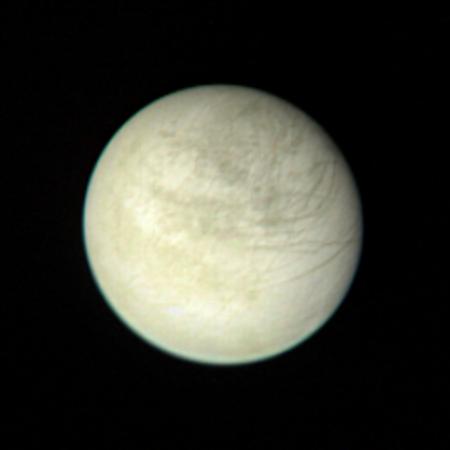
Europa was imaged by the Voyager 1 probe (NASA).
Although not very clear, the Voyager images allowed us to observe a complex series of dark streaks crossing Europa's surface, suggesting that they were large cracks in the icy surface caused by some type of activity. Their characteristics suggested that the surface was free to drift away from Europa's deeper layers, like a giant ice shell with something different inside.
Many of the hypotheses developed at the time were confirmed in 1995 when NASA's Galileo probe entered orbit around Jupiter. Part of its mission includes observing and collecting data from the Galilean satellites during several flybys. Thanks to these measures, it was possible to observe a certain connection of the strong magnetic field created by Jupiter with Europa, compatible with the presence of a large amount of salty water between 10 and 30 kilometers beneath the ice cover.
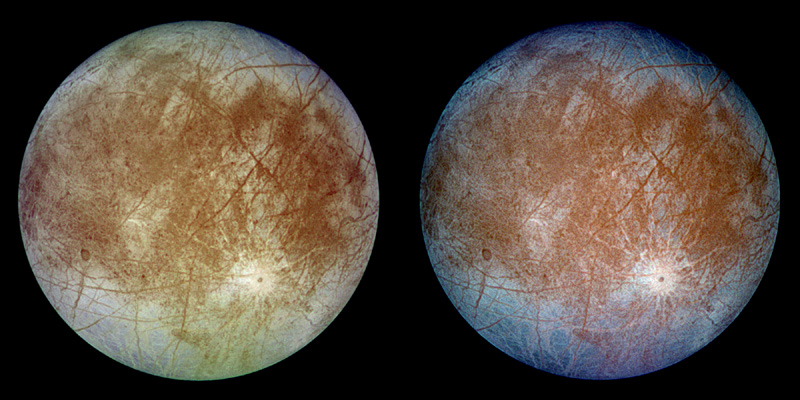
Europa's surface imaged by the Galileo probe (NASA).
The hypothesis is that the ocean has approx Twice the water In all terrestrial oceans, it forms an intermediate layer between a salty and icy shell and a rocky interior. Deeper still lies an iron core with a higher temperature than the outer part of the moon. From the data collected so far, the heat from the core passes slowly through the layer of rock in contact with the ocean, helping to keep a good portion of it in a liquid state. Precisely thanks to these phenomena, there may be a chance for life no matter how far away from the primary energy source in the solar system: the Sun, our only star.
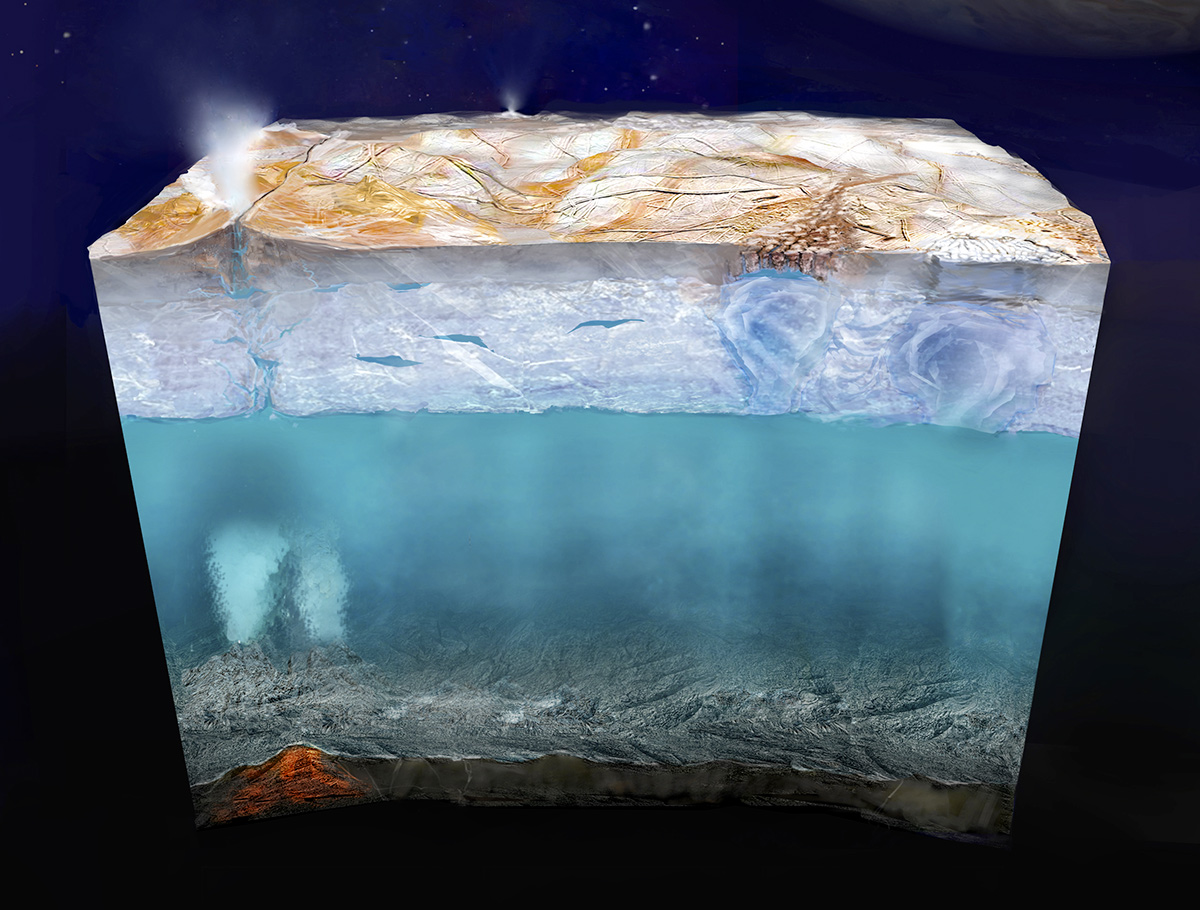
Graphical enlargement of the possible layers that make up Europa from above: a frozen surface, a kilometer ice sheet, an ocean, a seafloor with hydrothermal vents (NASA)
At least here on Earth, certain chemical elements are needed, such as carbon, oxygen, nitrogen, phosphorus, hydrogen, and sulfur. Depending on the way they combine, they form the molecules and substances that make up all organic matter on our planet, but singly or in simple combinations they are found practically everywhere in the universe. The research suggests that these elements were among the ingredients in the planet-forming processes and may have been present in Europa as well.
However, finding molecules associated with those elements outside of Earth does not necessarily mean that they are the result of some form of life, and under certain circumstances they may even form in the absence of life. At the same time, finding them would be a starting point for hypothesizing the existence of more complex phenomena that could be linked to the existence of some basic species.
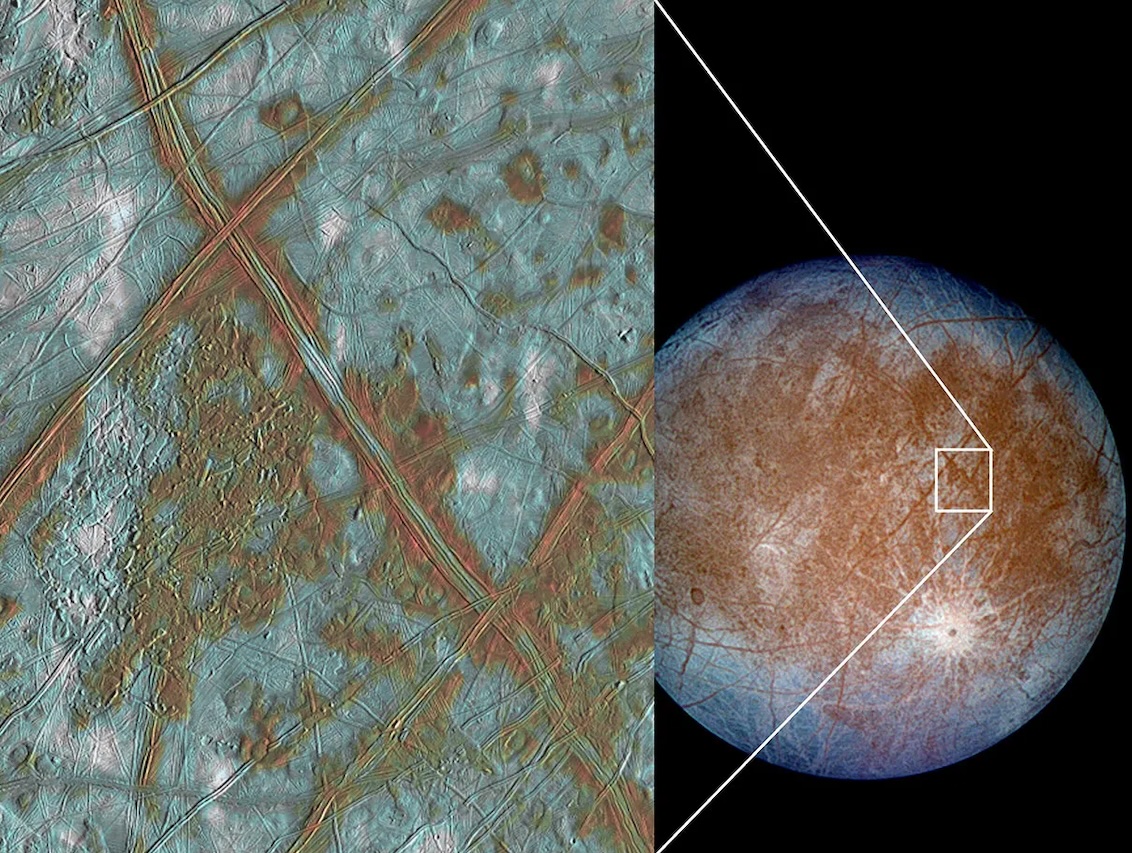
A profile of the icy surface of Europa (NASA).
These traces may exist not only in the interior, but also in the outer layers of Europa, where there are exchanges between surface ice and relatively hot material from deep. However, due to the extremely intense radiation from Jupiter, life on the surface of the Moon is unlikely. However, this highly energetic flow will work in favor of those seeking life in those areas. Radiation They break Water molecules are made up of their two components, hydrogen and oxygen. The former dissipates very quickly in the space environment, while the latter is more reactive and if it reaches the ocean it reacts with other elements and becomes an energy source for some microorganisms.
It's hard to imagine that anything could survive at depths where sunlight never reaches. Nevertheless, we have known for some time that even on Earth, bacteria and some microorganisms cannot survive, but multiply in extreme conditions. For example, they live at great depths in the oceans near hydrothermal vents, from which high-temperature gases emerge due to our planet's internal activity. These “extremophile” microorganisms are adapted to survive in conditions of high pressure and temperature, or even extreme acidity or near-absence of nutrients.
This type of species may have lived undisturbed for a while on Europa, but finding their traces is not easy because of the limited access to the ocean, protected by a kilometer-thick ice sheet. Clipper will not land on the ice or attempt to drill into it, but will use its instruments to analyze gases escaping from cracks in the shell. They have been in the past observed Puffs of steam through some telescopes are another clue to the moon's possible geological activity, but also an opportunity to try to analyze the gases and other materials accompanying those emissions in the surrounding space. While the probe will probe Europa's extremely thin atmosphere, it is not said to be able to intercept an actual jet.
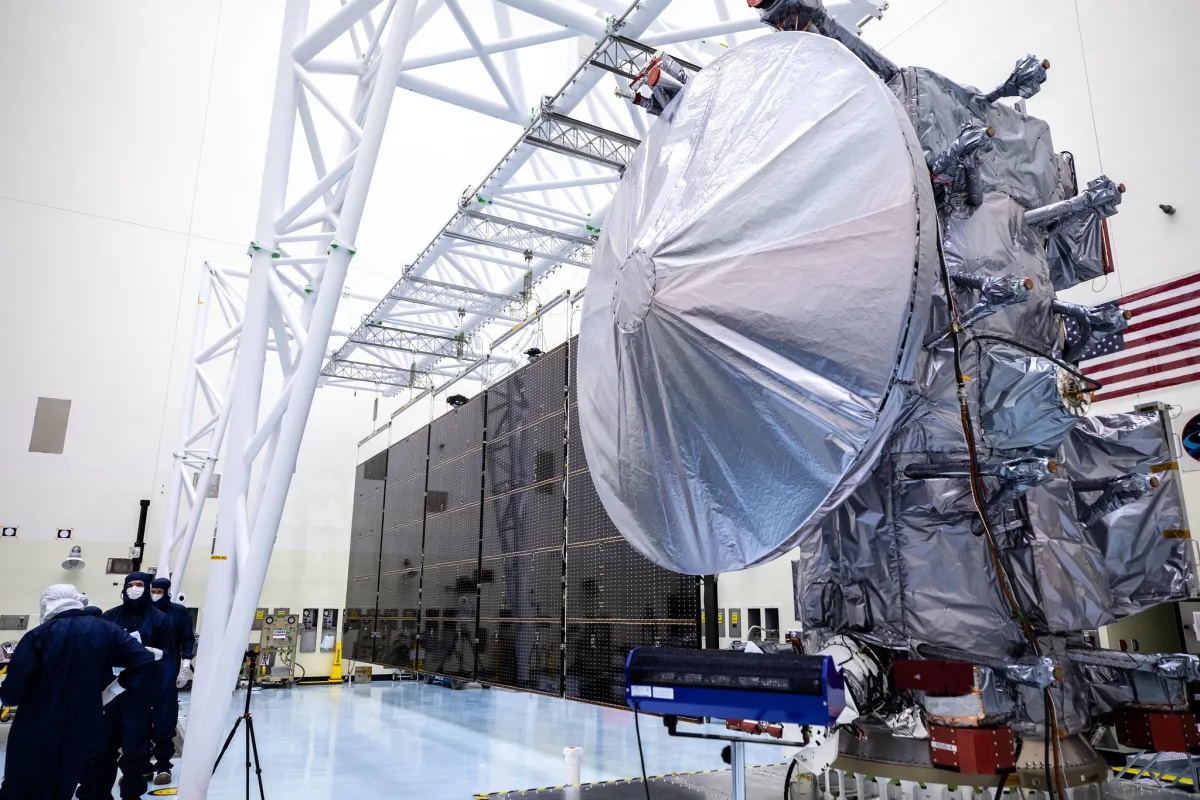
Preparation phases of the Europa Clipper probe (NASA).
Clipper will use its instruments to conduct studies that confirm the presence of a large ocean, but not the properties of Europa's gravity, iron core and surrounding rocky layer. The findings will be important for more precisely calculating the thickness of the ice cover and understanding whether Jupiter's strong gravitational influence causes many cracks in its surface.
The probe weighs 3.2 tons, adding about the same amount of propellant used to carry out 49 flybys of Europa, reaching a distance of at least 25 kilometers from the surface. The probe will continue to move toward Europa and Jupiter and reduce its instruments' exposure to planet-producing radiation, making it possible to send data back to Earth. Clipper's central body is nearly five meters tall and four meters wide, but the probe reaches a maximum width of 30 meters thanks to its large solar panels, which can be used to power on-board instruments.
The mission is so ambitious and has been planned for several years that it risks being canceled at various stages of NASA's reassessment. It's the largest deep space probe ever built, heading toward a distant world that could teach us something about ourselves.





